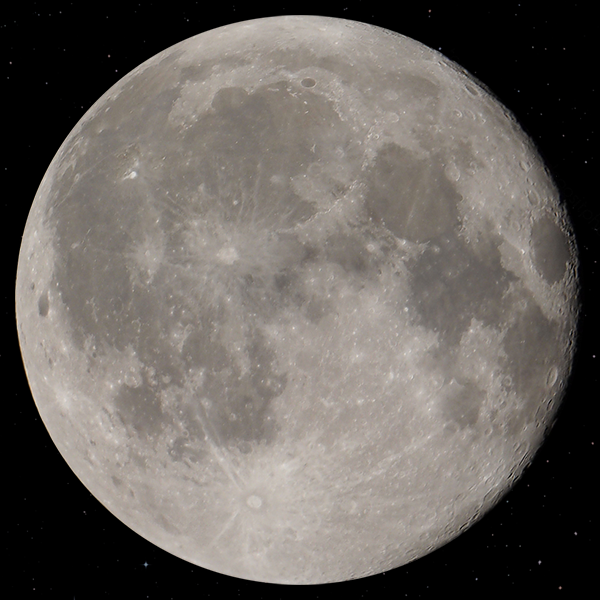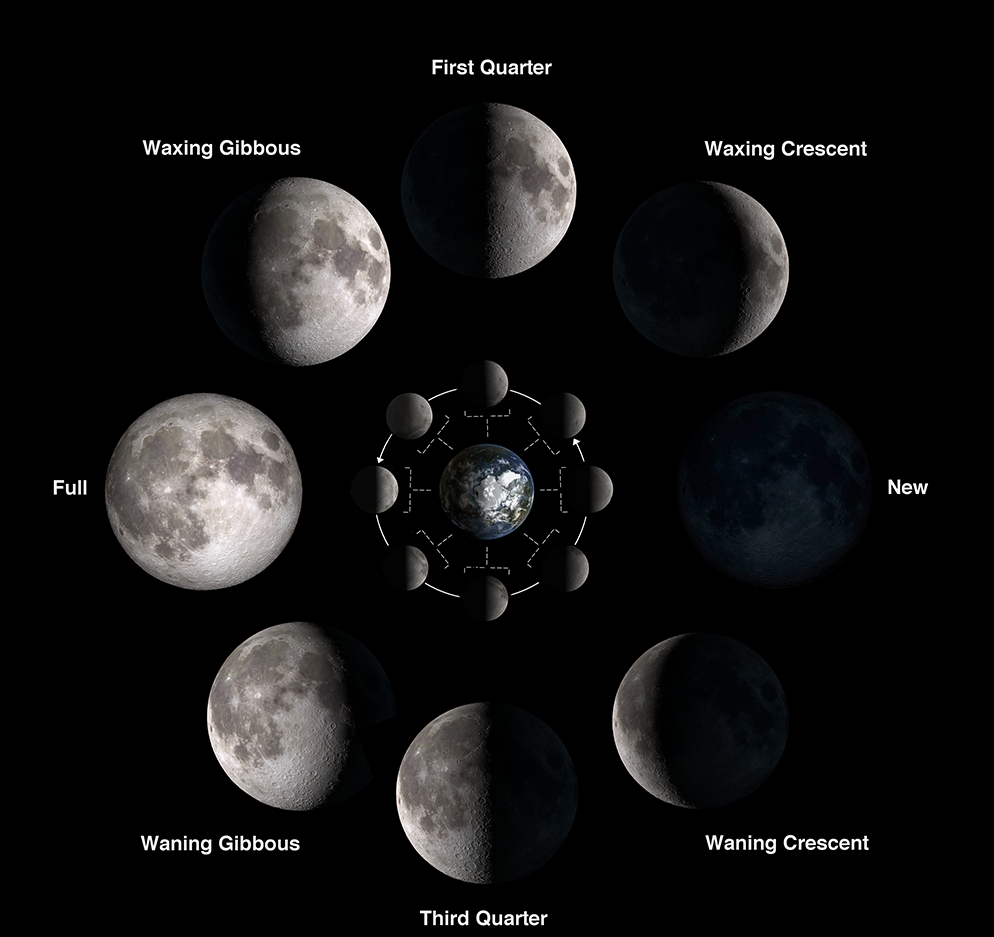|
The Moon is around 4.51 billion years old.
As it orbits the Earth, it always shows the same side, this is called synchronous rotation.
The Moon's far side has a crust that is 30 mi (48 km) thicker than that of the near side.
This is thought to be because the Moon fused from two different bodies.
After the Sun, the Moon is the 2nd brightest regularly visible celestial object in Earth's sky.
Its gravitational influence produces the ocean tides, body tides, and the slight lengthening of the day.
When viewed from Earth The Moon is bright enough for its reflected light to cast shadows,
making it on average the third brightest object in the night sky after the Moon and Venus.

The Moon in Astronomy
- The Moon's diameter is about 3,475 kms
- The circumference at the Moon's equator - 10,917 kms
- Distance of the Moon from Earth varies from around 356,400 km - 406,700 km
- Orbit period from 27.3 - 29.5 Earth days
- Surface temperature of The Moon is -233 - 123 degrees celcius
The Moon in Astrology
- The Moon rules Cancer and the 4th House
- Spends around 27-29 days in each Astrological Sign
The Moon's is a personal/inner planet, it's function is the development of feelings and it asks for a quick response as it passes through each sign.
The Moon urges us to develop the ability to feel or to respond emotionally and sensitively, tuning into what we might call a soul.
It highlights the urge to nurture and be nurtured by others.
The Moon Asks
- What kinds of experiences are most essential to my happiness?
- When moodiness and irrationality overtake me, how are they expressed?
- What unconscious emotional needs motivate my behaviour?
- How do I want want to be nurtured by others, and how do I express that in return?

Image Credit: NASA/GSFC/Arizona State University
Published: October 5, 2017
Four hemispheric views of the Moon constructed from images taken by NASA's Lunar Reconnaissance Orbiter.

Image Credit: NASA/GSFC/Arizona State University
Published: October 5, 2017
Four hemispheric views of the Moon constructed from images taken by NASA's Lunar Reconnaissance Orbiter.

Image Credit: NASA/Bill Dunford
Published: October 4, 2017

Back 2 Top
|